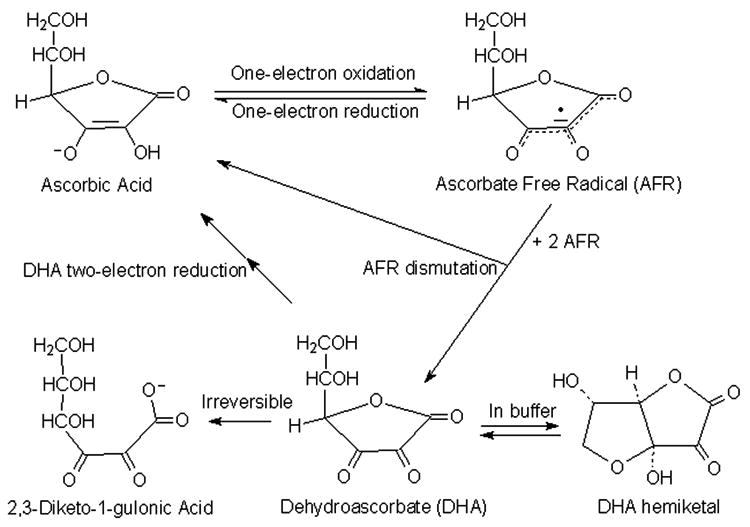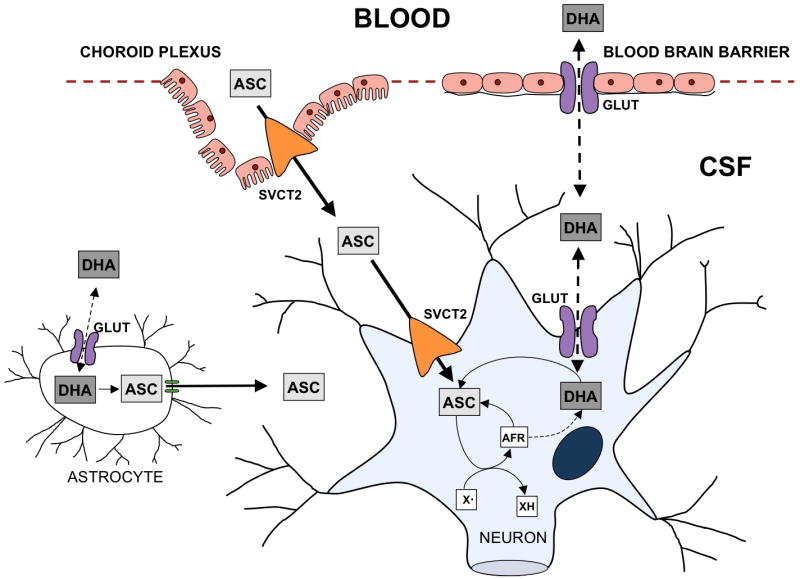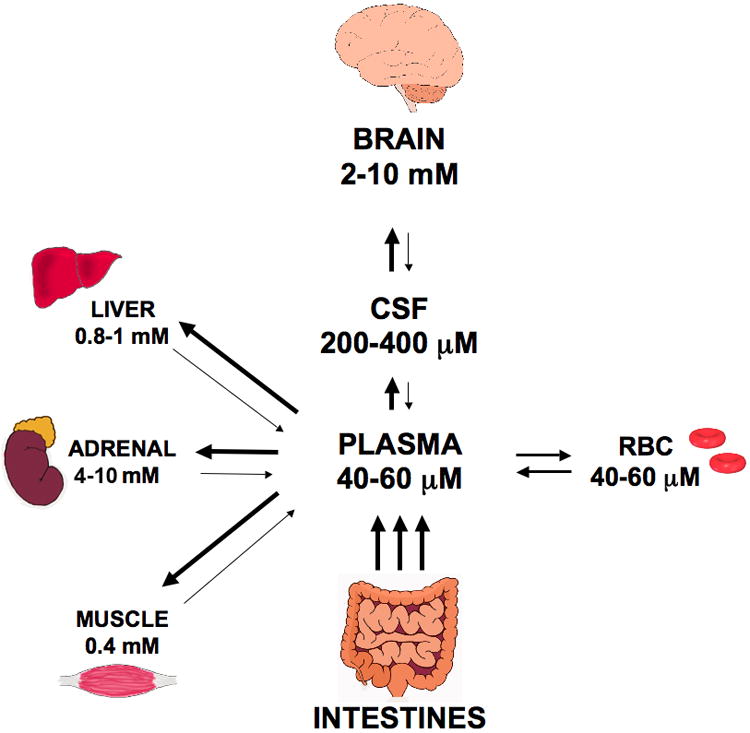Harrison Fiona E., May James M.
Free Radical Biology and Medicine, 2009
Abstract
Ascorbate (vitamin C) is a vital antioxidant molecule in the brain. However, it also has a number of other important functions, participating as a cofactor in several enzyme reactions, including catecholamine synthesis, collagen production, and regulation of HIF-1 alpha. Ascorbate is transported into the brain and neurons via the sodium-dependent vitamin C transporter 2 (SVCT2), which causes accumulation of ascorbate within cells against a concentration gradient. Dehydroascorbic acid, the oxidized form of ascorbate, is transported via glucose transporters of the GLUT family. Once in cells, it is rapidly reduced to ascorbate. The highest concentrations of ascorbate in the body are found in the brain and in neuroendocrine tissues such as adrenal, although the brain is the most difficult organ to deplete of ascorbate. Combined with regional asymmetry in ascorbate distribution within different brain areas, these facts suggest an important role for ascorbate in the brain. Ascorbate is proposed as a neuromodulator of glutamatergic, dopaminergic, cholinergic, and GABAergic transmission and related behaviors. Neurodegenerative diseases typically involve high levels of oxidative stress and thus ascorbate has been posited to have potential therapeutic roles against ischemic stroke, Alzheimer's disease, Parkinson's disease, and Huntington's disease.
Figures

Ascorbate metabolism. Chemical structures and reactions.
 Ascorbate uptake and metabolism in the CNS. ASC, ascorbate; AFR, ascorbate free radical; DHA, dehydroascorbic acid; CSF, cerebrospinal fluid; X• oxidizing free radical species. Ascorbate enters the CSF either directly through the choroid plexus via the SVCT2 or possibly as DHA via GLUTs across the blood brain-barrier. Similarly ascorbate enters the neuron through the SVCT2 or as DHA via the GLUTs. AFR generated by X• dismutates to form DHA and ascorbate. Both the AFR and DHA are recycled back to ascorbate by cellular metabolism. Glial cells obtain ascorbate from the recycling of DHA that enters via GLUTs while neurons also have the SVCT2 for direct acquisition of ascorbate.
Ascorbate uptake and metabolism in the CNS. ASC, ascorbate; AFR, ascorbate free radical; DHA, dehydroascorbic acid; CSF, cerebrospinal fluid; X• oxidizing free radical species. Ascorbate enters the CSF either directly through the choroid plexus via the SVCT2 or possibly as DHA via GLUTs across the blood brain-barrier. Similarly ascorbate enters the neuron through the SVCT2 or as DHA via the GLUTs. AFR generated by X• dismutates to form DHA and ascorbate. Both the AFR and DHA are recycled back to ascorbate by cellular metabolism. Glial cells obtain ascorbate from the recycling of DHA that enters via GLUTs while neurons also have the SVCT2 for direct acquisition of ascorbate.

Ascorbate contents of plasma and various vertebrate organs.
| PMID: | 19162177 |
|---|---|
| PMCID (Free PMC Article): | PMC2649700 |
| DOI: | 10.1016/j.freeradbiomed.2008.12.018 |
| Category: | Brain / Mental Clarity |
The best supplements with Ascorbic Acid in Brain / Mental Clarity category:
- KetoCharge -
KetoCharge - Activate the power of ketosis in your body to burn fat Fast!
KetoCharge ramps up your body’s natural production of ketones. It contains among others: Ascorbic Acid. - Green Tea Extract with EGCG + Vitamin C, 120 Vegetarian Capsules (Zenwise Health) - Zenwise Health Green Tea Extract features 725 mg of Green Tea Extract to support weight loss, energy levels, cognition, and cardiovascular health. It contains among others: Ascorbic Acid.
Articles similar to "Vitamin C Function in the Brain: Vital Role of the Ascorbate Transporter SVCT2."
- The role of Ascorbic Acid in Brain / Mental Clarity: Preventive and Therapeutic Potential of Vitamin C in Mental Disorders. (In this review, we summarize the involvement of vitamin C in mental disorders by presenting available evidence on its pharmacological effects in animal models as well as in clinical studies...)
- The impact of Ascorbic Acid on Brain / Mental Clarity: Synergistic Application of Zinc and Vitamin C to Support Memory, Attention and the Reduction of the Risk of the Neurological Diseases. (Zinc and vitamin C supplementation of the body is important for CNS functioning...)
Previous article
Zinc: Role in Immunity, Oxidative Stress and Chronic Inflammation.

























































